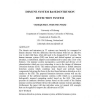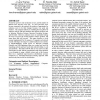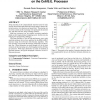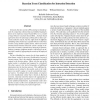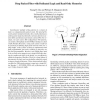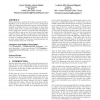ISSA
2008
14 years 4 months ago
2008
The threats and intrusions in IT systems can basically be compared to human diseases with the difference that the human body has an effective way to deal with them, what still nee...
DSOM
2008
Springer
14 years 5 months ago
2008
Springer
The accuracy of detecting an intrusion within a network of intrusion detection systems (IDSes) depends on the efficiency of collaboration between member IDSes. The security itself ...
ECBS
2007
IEEE
14 years 5 months ago
2007
IEEE
Intrusions impose tremendous threats to today’s computer hosts. Intrusions using security breaches to achieve unauthorized access or misuse of critical information can have cata...
CASES
2005
ACM
14 years 5 months ago
2005
ACM
Embedded systems are being deployed as a part of critical infrastructures and are vulnerable to malicious attacks due to internet accessibility. Intrusion detection systems have b...
ACMSE
2006
ACM
14 years 5 months ago
2006
ACM
Society has grown to rely on Internet services, and the number of Internet users increases every day. As more and more users become connected to the network, the window of opportu...
CF
2008
ACM
14 years 5 months ago
2008
ACM
String searching is the computationally intensive kernel of many security and network applications like search engines, intrusion detection systems, virus scanners and spam filter...
ACSAC
2003
IEEE
14 years 6 months ago
2003
IEEE
Intrusion detection systems (IDSs) attempt to identify attacks by comparing collected data to predefined signatures known to be malicious (misuse-based IDSs) or to a model of lega...
FCCM
2004
IEEE
14 years 6 months ago
2004
IEEE
Searching for multiple string patterns in a stream of data is a computationally expensive task. The speed of the search pattern module determines the overall performance of deep p...
CCS
2006
ACM
14 years 6 months ago
2006
ACM
Intrusion detection systems create large amounts of alerts. Significant part of these alerts can be seen as background noise of an operational information system, and its quantity...
CSFW
2004
IEEE
14 years 6 months ago
2004
IEEE
Intrusion Detection Systems (IDSs) have become an important part of operational computer security. They are the last line of defense against malicious hackers and help detect ongo...
